
10 Minute Read
13 Ways to Reduce Noise in your Office
Discover 13 ways to reduce noise in your office with Resonics - the UK’s leading acoustic specialists in acoustic design and noise control for workplaces and offices.
Categories
Advice
TL;DR – Summary
Noise in offices isn’t just distracting, it affects focus, productivity and wellbeing. Resonics highlights practical ways to reduce office noise, combining smart design, acoustic treatments and simple behaviour changes to create a calmer, more effective workspace.
Key actions include:
- Reorganising layouts to separate noisy and quiet zones
- Installing acoustic panels and partitions to absorb sound
- Using sound‑masking systems or white noise
- Adding plants as natural sound absorbers
- Creating quiet zones or acoustic pods for focused work
- Encouraging noise‑aware behaviours, like phone etiquette
Ways to Reduce Noise in your Office
The chorus of clacking keyboards, ringing phones, and everyday office chatter can be more than just a nuisance; it can hinder productivity and employee well-being. At Resonics, we specialize in harmonising these sounds of industry into a symphony of silence.
In the bustling environment of an office, the importance of acoustics is often overlooked. Yet, it plays a significant role in creating a conducive work environment, and it is an employers responsibility to create an office space with acceptable office noise levels.
This article delves into the ways you can dial down the decibels by addressing the acoustic requirements for offices, highlighting the importance of sound management for productivity and employee wellbeing.
| Strategy | Key Actions |
|---|---|
| 1. Reimagining Office Layout | Control the flow of noise by strategically positioning departments and designating quiet zones for focused work. |
| 2. Acoustic Panels | Enhance visual and auditory comfort by installing panels that aesthetically complement the space while absorbing sound waves and reducing noise. |
| 3. Sound Masking | Introduce background noise through sound masking to make disruptive sounds less perceivable and maintain a high level of concentration. Think of it as an office noise cancelling machine! |
| 4. Partition and Conquer | Use acoustic partitions and dividers to contain noise and minimize its travel through the workspace. |
| 5. Flexible Work Arrangements | Decrease overall office noise levels by offering staggered work schedules and promoting homeworking arrangements. |
| 6. White Noise Devices | Employ white noise devices that produce a constant, soothing sound to mask distracting workplace noise. |
| 7. Carpeting | Install carpets and quality underlays to mitigate footfall sounds, add to workplace comfort, and contribute to a quieter office environment. |
| 8. Embracing the Green | Utilize plant installations to absorb and disrupt sound waves, providing both visual appeal and a natural method for reducing noise in the office. |
| 9. Acoustic Furniture | Choose furniture that serves a dual purpose: designed for noise reduction while providing functional workspace solutions. |
| 10. Policy and Culture | Consider using headsets or setting up quiet zones in the office. |
| 11. Install Acoustic Pods | Create a soundproof area where individuals can retreat for private meetings or focused work. |
| 12. Isolate IT Equipment | Move noisy machines to isolated areas. |
| 13. Noise Cancelling Headphones | The quickest cheapest way to improve the noise levels. |
1. Re-imagining Office Layout
A carefully planned office layout can be a game-changer in noise reduction. By placing busy departments separate from quiet spaces, and incorporating dedicated zones for collaboration, the chaos can be contained, retaining focus where it’s needed most. Strategic office planning goes beyond the aesthetics of desk placement and the flow of foot traffic. It bears a significant impact on how sound travels through a workplace, creating pockets of noise and quiet zones that affect how employees concentrate and collaborate.
A well-thought-out office layout starts with understanding the sound profile of various departments. For instance, sales teams often engage in lively conversations, which could disrupt the intense focus needed by developers or writers situated nearby. By placing naturally louder environments away from areas that require quiet concentration, one can preemptively control noise levels.
To truly maximise the efficiency of office space, companies might consider engaging with acoustic experts to conduct a detailed acoustic survey. These insights can be instrumental in not just retrofitting but proactively designing an office layout that synergizes with the sonic demands of the workplace.

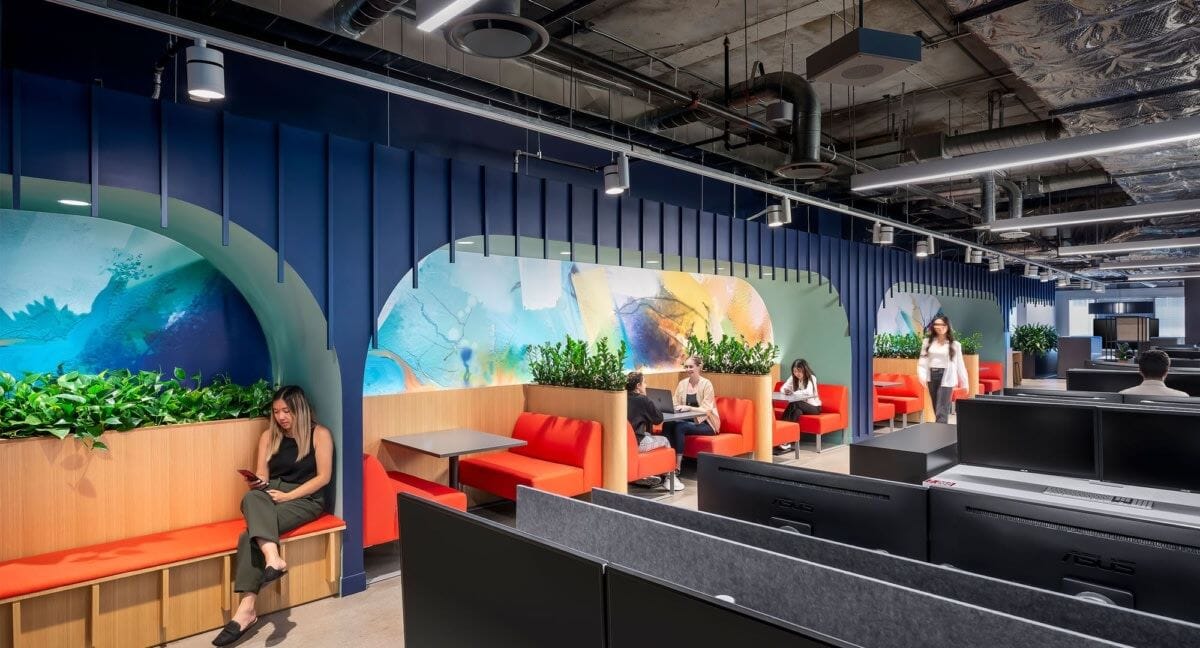
2. Partition and Conquer
Partitions are a versatile and adaptable solution in the fight against office noise. When sound waves meet these barriers, they are either reflected back, absorbed, or diffused, limiting the extent to which noise can travel across the office.
When implementing partitions, it’s critical to strike a balance between open communication and the need for focus. While partitions serve to manage acoustics, they should not create a sense of isolation or hinder teamwork.
For a more detailed understanding of open plan office acoustics, visit our Open Plan Office Acoustics page.
3. Flexible Work Arrangements
The ebb and flow of people within an office has a profound impact on ambient noise levels. Embracing flexible work arrangements can be an innovative approach to managing this dynamic. By staggering work hours or allowing employees the option to work from home, an organisation can significantly reduce the number of simultaneous on-site interactions, thereby lowering the overall noise footprint.
The concept of homeworking takes this a step further. When employees work from home, they customise their own acoustic environment.
4. Embracing the Green
Bring the outdoors in with office plants. Incorporating plants into office design isn’t just about aesthetics and air quality; it’s also a natural and effective way to reduce noise. Plants can absorb, diffract, and reflect sound, making them an instrumental part of an office’s acoustic strategy.
An alternative could be the use of eco-friendly acoustic products made from sustainable materials, which can mimic the appearance of plants while providing similar sound-dampening properties.

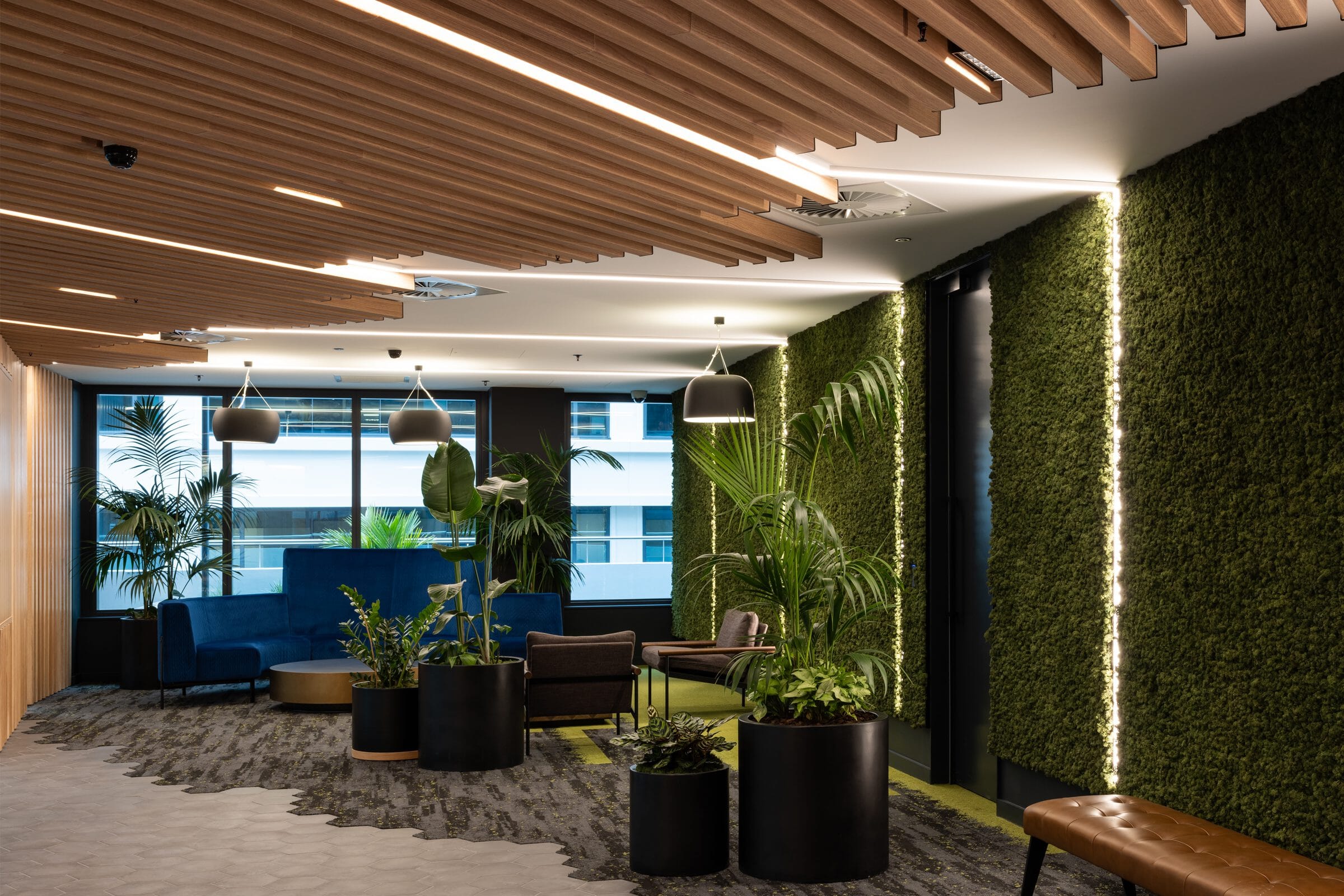
5. Carpeting—The Underfoot Mute
Swap out echoing hard floors for the plush quietude of carpets. Flooring choices can significantly impact office acoustics, and the selection of suitable carpeting is a powerhouse move in the quest for quieter workspaces. Hard surfaces, such as tile, wood, or concrete, provide little resistance to sound, allowing it to bounce and reverberate throughout the office. With every step cushioned, the thud and clamor give way to a soft hush, making for a more serene office landscape.
In spaces where aesthetics are as paramount as acoustics, such as client-facing areas or design studios, printed acoustic panels can be used in tandem with carpets to create a space that is both visually stunning and acoustically sound.
6. Office Sound Absorbing Panels: The Aesthetic Silencer
Introducing acoustic panels not only decreases noise pollution but also adds a touch of sophistication to the office decor. They are proficient in reducing echoes and reverberation, wrapping the workspace in a blanket of calmness. We recommend reverberation time in an open plan office to be no more than one second. Contact us for a survey and assessment of your office space.
7. Sound Masking Magic – Office Active Noise Cancellation
Imagine a sound environment so balanced that distractions fade away. Sound masking is the subtle art of adding a barely noticeable background noise, which makes disruptive sounds less distinct and reduces their ability to interrupt workflows. Sound masking is akin to an auditory illusionist, subtly introducing a carefully crafted background noise that cloaks unwanted office sounds. This technology is nuanced and relies on a spectrum of sound that is engineered to blend with the frequencies of human speech, making disruptive conversations fade into the background.
For industries where sound masking may raise concerns regarding speech privacy or security, pairing the system with soundproofing elements, such as acoustic panels and office acoustic solutions, provides a fortified acoustic defense.
We offer complete Sound Masking solutions from Soft dB which can be controlled and adapted across multiple zones within the office.
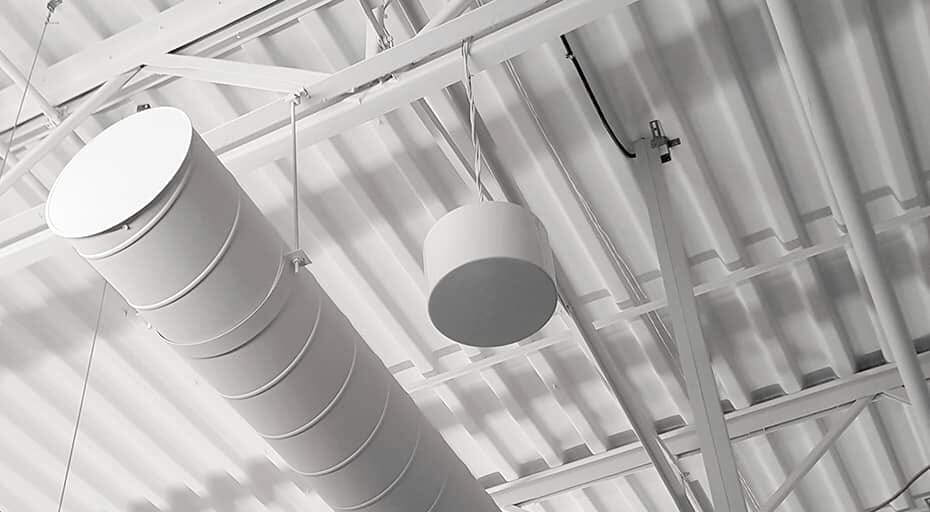
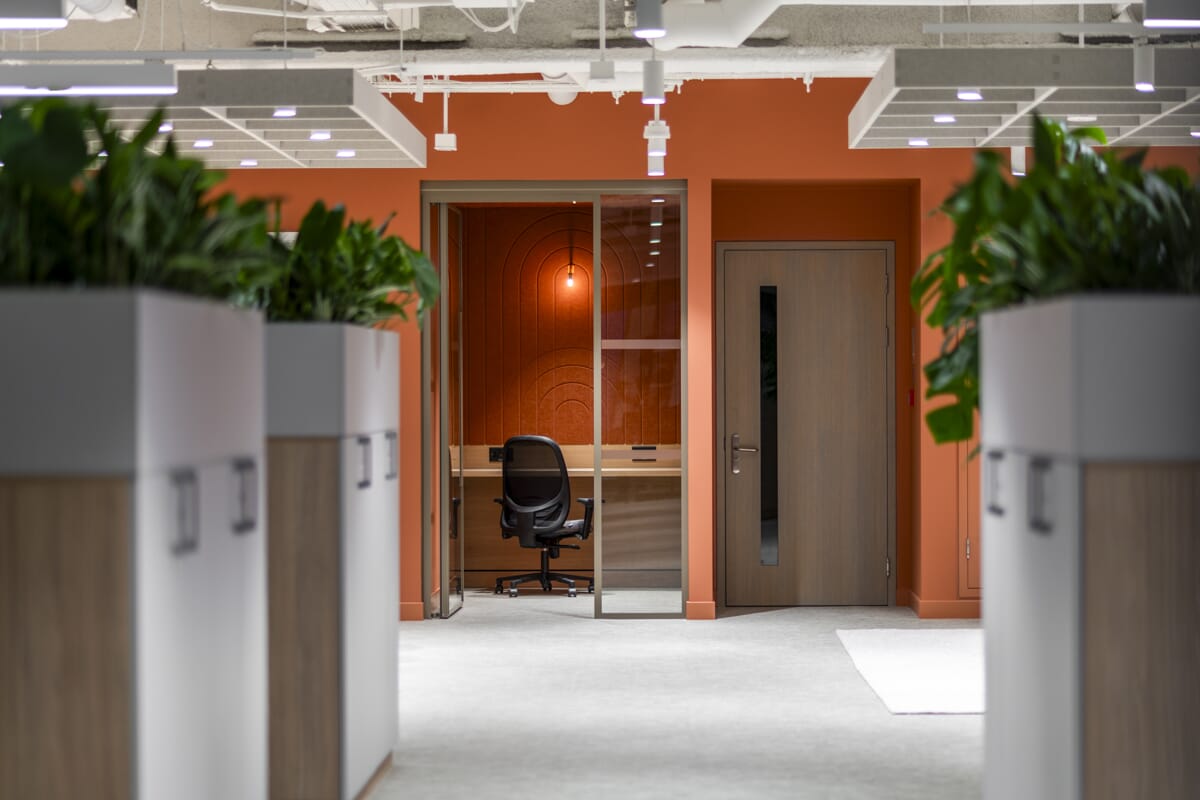
8. Policy and Culture
Creating a nurturing culture, attuned to acoustic comfort can amplify the effectiveness of any sound strategy. Simple, considerate actions like using headset communication and reserving speakerphone usage for private rooms can make all the difference.
By weaving these methods into the fabric of office design and culture, businesses can achieve dramatic improvements in the acoustic quality of their workspaces.
9. White Noise Devices
White noise is essentially a simplified and more basic version of Sound masking. White noise generally is not correctly tuned to cover up or mask frequencies that are already present in the office. It can be a good stop gap solution before installing a more effective sound masking system.
10. Acoustic Furniture: Functional and Quiet
Modern furniture now comes engineered with noise reduction in mind. Opt for furnishings that not only provide comfort but also actively subdue the sonic uproar. Modern furnishings have evolved to merge functionality with acoustic benefits, making strategic pieces an integral component of a comprehensive noise-management plan. Acoustic furniture, in particular, is an innovative class of design where items are not only chosen for their ergonomic features or visual appeal but also for their ability to absorb and disrupt sound waves.
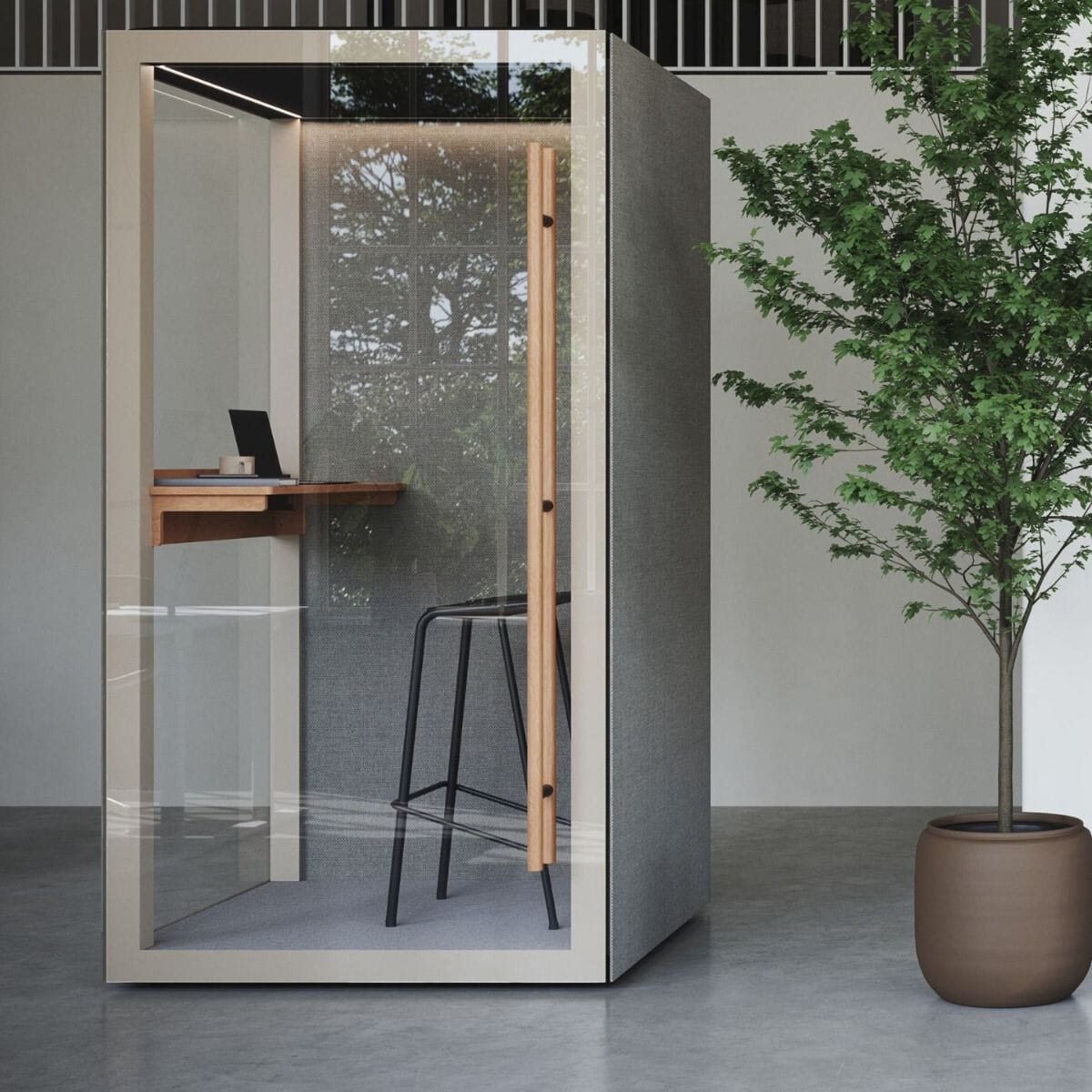
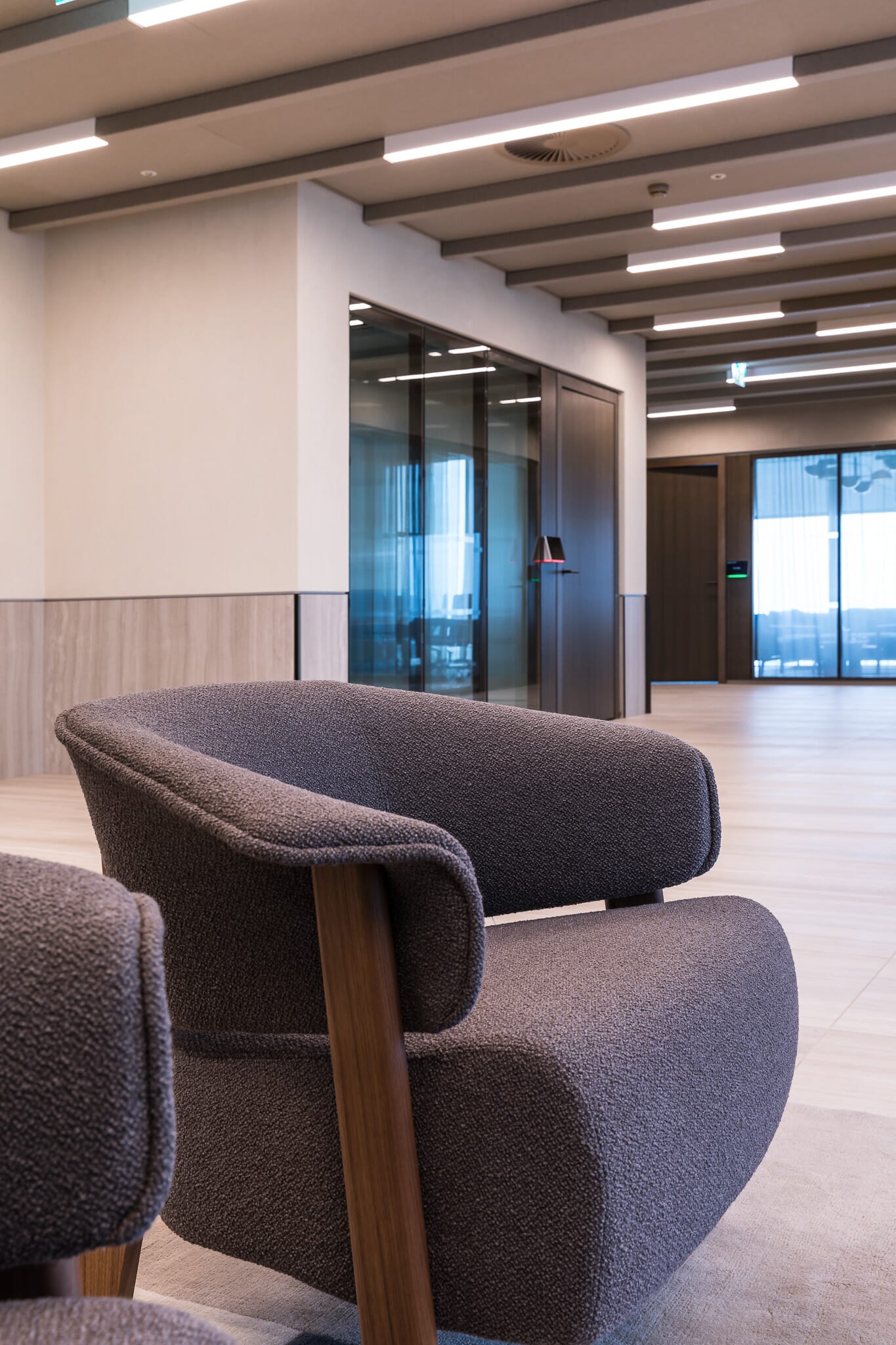
11. Install acoustic pods
Acoustic pods offer a contemporary solution to noise disturbances in open-plan offices and public spaces. These self-contained units are designed to create a soundproof area where individuals can retreat for private meetings or focused work without external interruptions. Featuring high-quality sound-absorbing materials, they effectively reduce reverberation and enhance speech intelligibility. Acoustic pods are not only functional but also aesthetically versatile, with customisable designs that can complement any interior. They embody the modern need for flexible, quiet spaces in bustling environments, catering to the well-being and productivity of users.
At Resonics, we’ve installed an Abstracta Zen pod in our London office and have been very impressed with its performance!
12. Noise-cancelling headphones
Consider this approach a clever workaround. Suppose a full-scale office remodel is out of the question or you’re in search of an immediate and cost-effective solution, then noise-canceling headphones might just be the perfect fit for your needs.
13. Isolate IT Equipment
Devices like printers and copiers not only generate noise while operating but also become hubs where staff often congregate. By allocating a dedicated space for these machines, ideally in a sectioned-off zone away from the primary work area, you can notably diminish the ambient sound in your office.